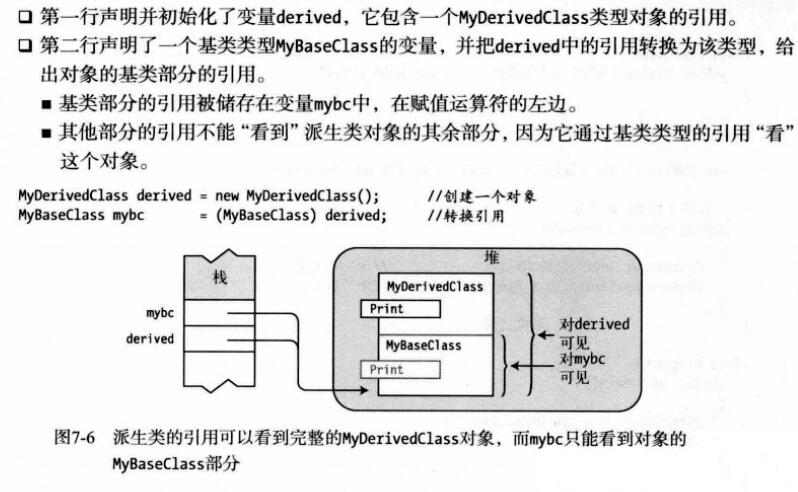FROM P121
虽然派生类不能删除它继承的任何成员,但可以用与基类成员名称相同的成员来屏蔽(mask)基类成员。
□要屏蔽一个继承的数据成员,需要声明一个新的相同类型的成员,并使用相同的名称。
□通过在派生类中声明新的带有相同签名的函数成员,可以隐藏or屏蔽继承的函数成员。
请记住,签名由名称和参数列表组成,不包括返回类型
□要让编译器知道你在故意屏蔽继承的成员,使用new修饰符。否则,程序可以成功编译,但编译器会警告你隐藏了一个继承的成员。
□也可以屏蔽静态成员
1 using System; 2 using System.Collections.Generic; 3 using System.Linq; 4 using System.Text; 5 using System.Threading.Tasks; 6 7 namespace review 8 { 9 class class1 10 { 11 public string Field1 = "Field1"; 12 public void Method1(string value) 13 { 14 Console.WriteLine("class1 {0}", value); 15 } 16 } 17 class class2 : class1 18 { 19 new public string Field1 = "Field2"; 20 new public void Method1(string value) 21 { 22 Console.WriteLine("class2 {0}", value); 23 Console.WriteLine("class2 {0}", base.Field1); 24 } 25 } 26 class Program 27 { 28 static void Main(string[] args) 29 { 30 class2 tem = new class2(); 31 tem.Method1(tem.Field1); 32 ((class1)tem).Method1(((class1)tem).Field1); 33 Console.Read(); 34 } 35 } 36 }
输出结果:
class2 Field2
class2 Field1
class1 Field1
第二行的输出说明了,即使隐藏了继承自基类的一些字段、方法,也可以通过使用base. 来访问隐藏的继承成员。
对第三的说明为:

当对某个引用调用某个方法时,调用的是该引用所能看到的方法的实现。
对于第三行的输出,是从class1的引用类型来看tem,使用class1的引用类型来看Field1字段。因此会产生输出:class1 Field1